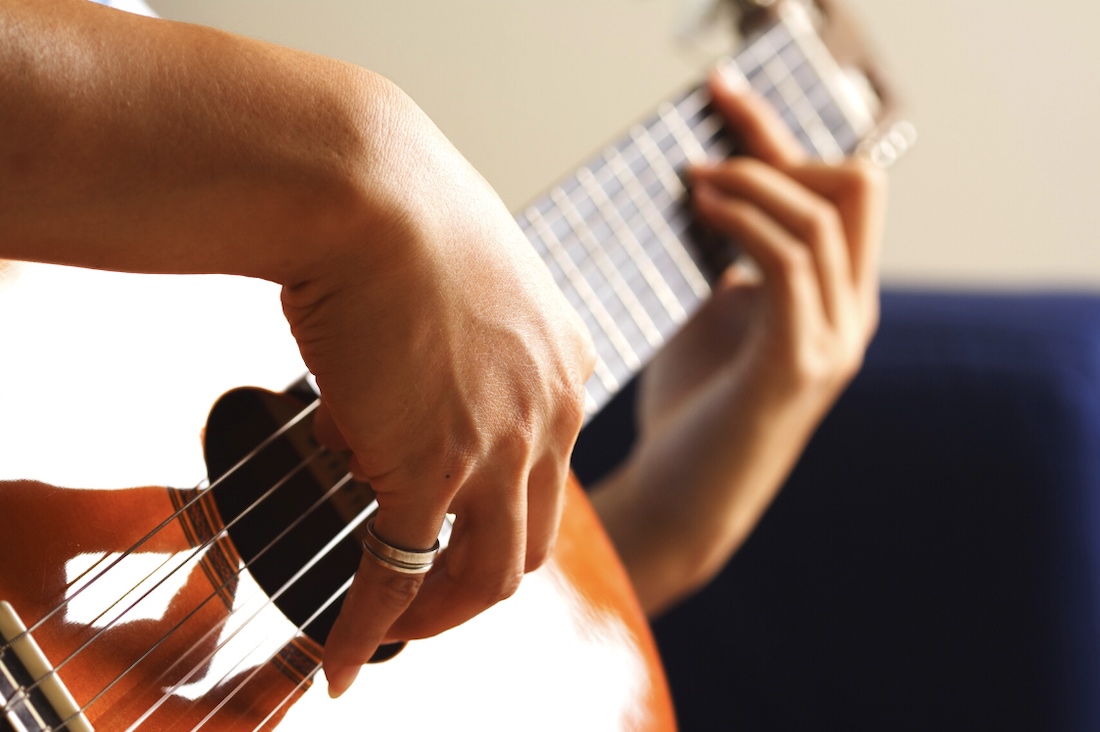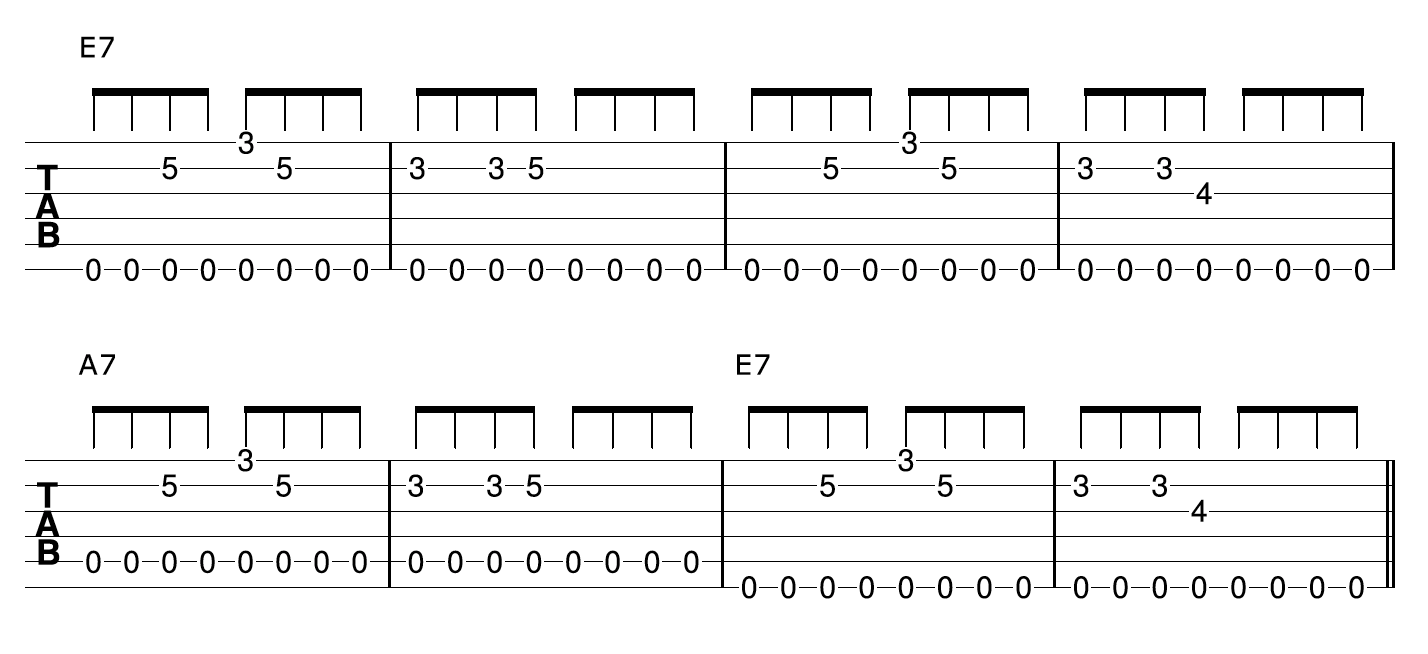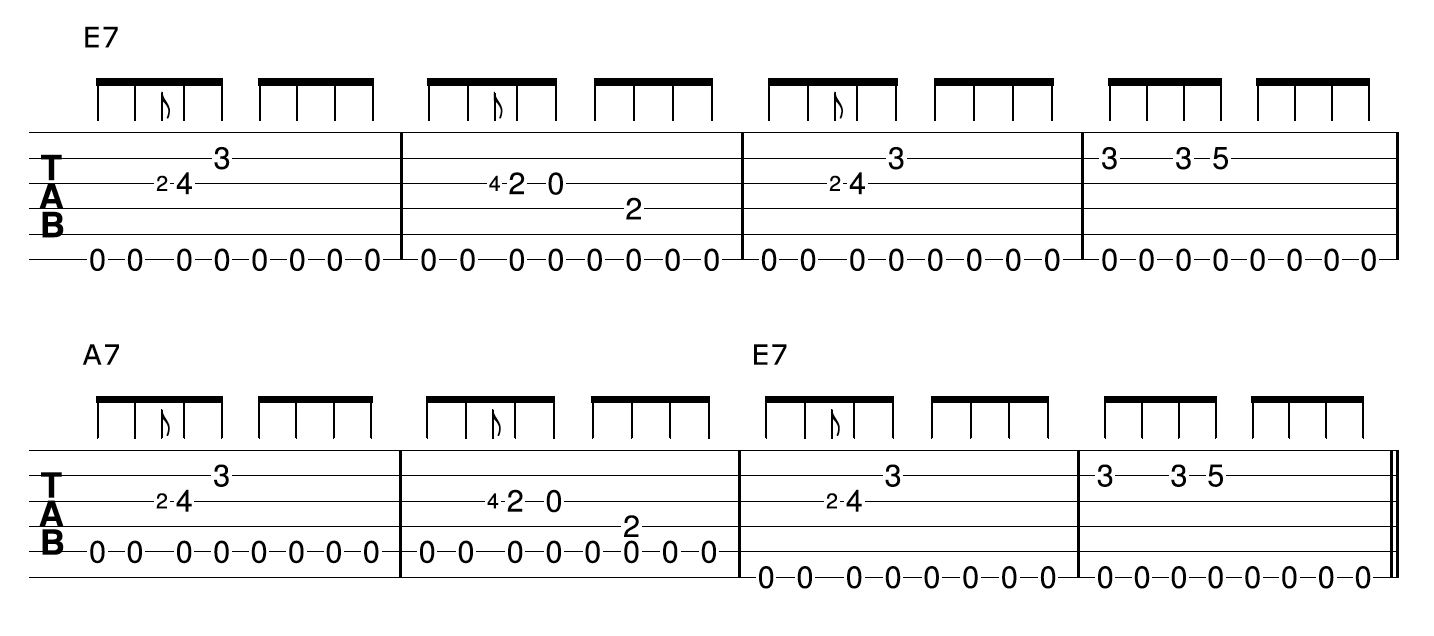How To Create Simple But Great Sounding Fingerstyle Blues Arrangements On Guitar
By Simon Candy
 Playing a fingerstyle blues on guitar is a lot of fun to do and easier than you may think. You can create your own arrangements with some basic, yet amazing-sounding fingerpicking ideas.
Playing a fingerstyle blues on guitar is a lot of fun to do and easier than you may think. You can create your own arrangements with some basic, yet amazing-sounding fingerpicking ideas.
In today’s lesson, I share some of these ideas with you. We will focus on an approach that allows you to play both the melody and accompaniment parts of a blues tune simultaneously.
Once you get the hang of this technique, it will be effortless, sound impressive, and make your listener believe that there is much more going on than what you are playing.
This approach involves the constant pedalling/plucking of the lower open strings with your thumb, while your fingers play riffs and melodies on the higher strings. The lower open string you are plucking will imply a chord of some sort, depending on what you are playing on the higher strings.
Watch the video below as I break down the process of creating a fingerstyle blues arrangement in 5 simple steps. Below the video are the examples I cover including detailed explanations of each part of the process:
Step 1: The Pentatonic Scale
Ok, to begin developing this skill I am going to use the following partial pentatonic scale in the key of Em. This is a combination of both pattern 1 and pattern 2 on the top 4 strings of your guitar:

Step 2: Adding The Low E Open String
Next, I want you to play this scale on the beat, using a quarter note rhythm, and with every note of the scale pluck the low open E string with your thumb like this:

Step 3: Swinging 8th Notes
Let’s now do the same thing, only this time your thumb will play a swinging 8th note rhythm on the low E string, while you continue to play the scale with a quarter note rhythm like this:

Be patient, this drill is a little more challenging because your thumb and fingers have different rhythms to play.
For the most part, I am palm muting the low open E string. This is done so the notes of the scale stand out in contrast to the pedalling bass note.
Step 4: Riffs And Melodies
• Blues Riff 1
Ok, so now you have the basic idea, and some drills to help develop this technique, we need a riff for our fingers to play on the higher strings while our thumb continues to pluck the low open E string.
Here is one that comes from our pentatonic scale:

While playing this riff, I am going to get my thumb to pick a constant 8th note rhythm on the low open E string, as I did with the scale, like this:

As a result, you get both the riff and your thumb creating the accompaniment to that riff.
In this case, the open E string is implying an E7 chord, the I chord of a blues.
Now, by simply switching the thumb to the open A string we can now play the same riff over what will be an implied A7 chord, the IV chord of a blues in E, like this:

With our thumb plucking/pedalling both the E and A open strings, we can now play the first 8 bars of an E blues, like so:

• Blues Riff 2
To reinforce the idea, let's use another riff from the pentatonic scale:

As we did with the first riff, we simply get the thumb to pick the 8th note rhythm on the low E string to imply the E7 chord while playing the riff on the higher strings:

And then on the 5th string to imply the A7 chord:

We can organize the first riff to cover the opening 8 bars of a typical 12-bar blues in E, just as we did before:

Step 5: The B7 Chord
When playing a 12-bar blues in E, the E7 and A7 chords are the most commonly used, but the B7 chord needs to also be included if you want to play through the entire 12 bars using the fingerpicking approach.
However, unlike the E7 and A7 chords, we don't have an open B string to use as a bass pedal. This is not a problem though, as the pedal tone does not necessarily have to be an open string. It's just that open strings make things easier and more preferable if available.
For the B7 we can simply hold the open B7 chord and pedal the root note (2nd fret, 5th string) as we play a simple melody on top like this:

Once we have our B7 chord sorted, we now have everything we need to play through a complete chorus of an E blues fingerpicking both the melody and accompaniment.
Here is an example using a combination of the riffs we worked with above:

As you can hear, the pedalling of a lower bass note can be very effective when combined with riffs and melodies played on the higher strings. It can add a lot of depth and interest to a piece of music. Additionally, I included a few bass note connections between the changes of the blues I played earlier to add even more interest and movement to the piece.
For more ways to play fingerstyle blues on guitar check out the video below. In it, you learn 3 ways to fingerpick your way through a blues including chord embellishment approaches, travis picking and block chords:
Learn more ways to create your own fingerstyle blues arrangements on guitar